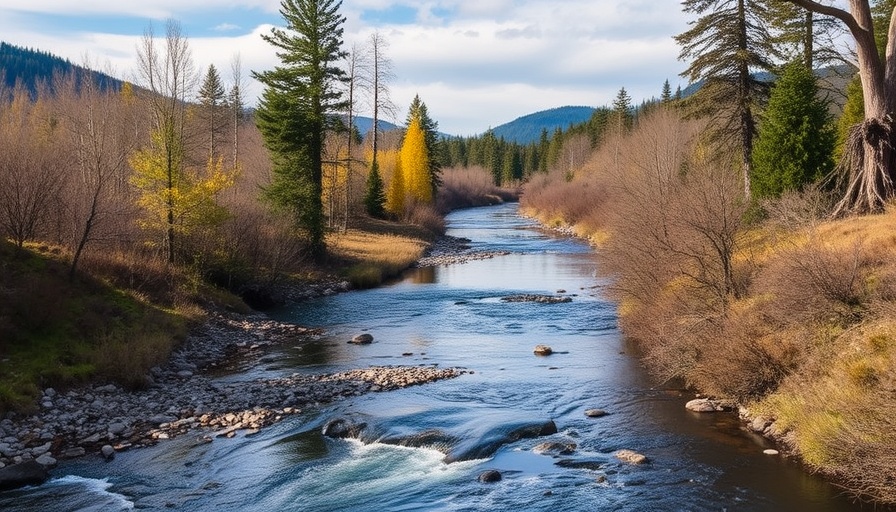
A River Revived: The Klamath's Remarkable Transformation
Less than a year has passed since four major hydroelectric dams were removed from the Klamath River, and the landscape has undergone a stunning transformation. once constrained by decades of damming, the Klamath has blossomed, offering not only a renewed ecosystem but also revitalized connections to Indigenous communities. Nature reclaims what was lost over a century, and both the environment and culture are coming alive again.
Historical Context: Why Dam Removal Matters
The removal of these dams in 2023 marked a landmark moment in U.S. history. This venture, recognized as the largest dam removal effort in the nation, was the culmination of decades of work by Indigenous tribes, environmental organizations, and local stakeholders. The dams had previously disrupted ecosystems and local communities, including the Yurok and Karuk Tribes, who rely on the river for their cultural and physical sustenance. Returning the river to its natural state signals not only ecological restoration but a reclaiming of cultural traditions and practices.
A New Era of Recreation and Responsibility
As the Klamath River returns to life, many are optimistic about the recreational opportunities it presents. New access points opened in mid-May, marking the beginning of a recreational renaissance for the river. This offers a perfect chance for people to reconnect with the land through hiking, rafting, and fishing, while also enabling local tribes to become stewards of the newly accessible lands. Engaging with the river allows for communal acknowledgment of the cultural significance of the area to Indigenous peoples.
Navigating Challenges: Balancing Public Access and Stewardship
While opportunities abound, managing this revived environment poses unique challenges. One key discussion is how to promote recreational activities without harming the sensitive ecosystems forming along its banks. Efforts are underway to develop hiking trails, campgrounds, and picnic spots in ways that respect both the land and its historical context.
Future Predictions: What Lies Ahead for the Klamath River
With the river flowing freely once again, the Klamath can be viewed as a case study in ecological restoration and community revitalization. Stakeholders are excited about the possibilities—hiking trails and eco-friendly recreational areas can become a focal point for economic growth, while also emphasizing sustainability and conservation efforts. Furthermore, there are hopes that this model of river restoration will encourage similar projects in other areas, fostering a broader movement towards recognizing the value of untouched natural ecosystems.
Connecting to Community and Culture
The resurrection of the Klamath River offers significant social connections, highlighting the importance of preserving Indigenous cultures. The Shasta Indian Nation, one of the tribes impacted by the dam's removal, will see over 2,800 acres of land returned. This land holds historical significance, and the tribe is poised to engage with their ancestral lands in ways that intertwine community, culture, and ecology.
Embracing a Sustainable Future
This restoration journey encourages individuals and communities to rethink their relationship with natural resources. By investing in sustainable practices and fostering a deeper understanding of the land's history and ecology, we can collectively contribute to healthier, more vibrant environments. From property investors to local residents, recognizing this relationship can inspire innovative designs and development practices aligned with ecological success.
The revival of the Klamath River shows that preserving nature is crucial not just for ecology, but also for honoring Indigenous communities and promoting sustainable living. Whether you are a property investor looking to engage with the community or a homeowner aiming for eco-friendly solutions, the lessons drawn from the Klamath's story are invaluable.
 Add Row
Add Row  Add
Add 





 Add Row
Add Row  Add
Add 








Write A Comment